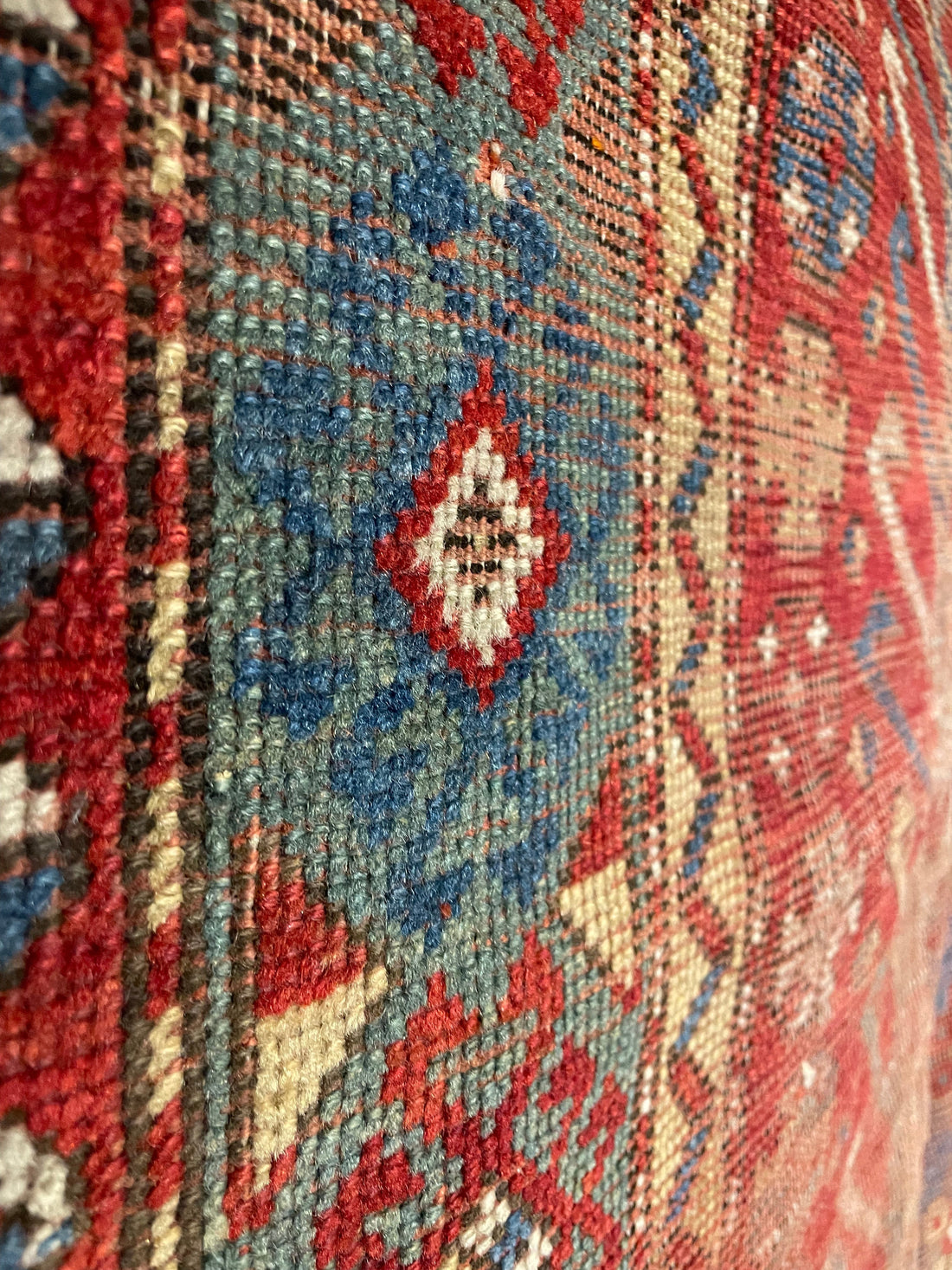
Woven into History
To many people, the world of antique rugs can seem confusing. How can a rug that appears worn, and full of imperfections sell for thousands of pounds? Wouldn’t it be more sensible to purchase a brand-new rug for a cheeper price? The answer is both yes and no.
The decision to buy a rug depends largely on what you are looking for. For some, a modern machine made rug, with its contemporary colours and durable design is perfectly suited to their needs. But for others, the value lies not only in a rug’s utility, but in its history, craftsmanship, and irreplaceable character. This is where antique rugs truly stand apart.
A Unique Allure
At SIEZ Gallery, many of our most collectable pieces are 19th century Caucasian rugs. This may surprise some, as the words “oriental carpet” often immediately bring traditional Persian rugs to mind with floral designs. And whilst Persian rugs are indeed among the finest and most celebrated in the world, Caucasian rugs - woven in the caucasus Armenia, Azerbaijan, Georgia - often with geometric designs offer something uniquely their own.
The culture, history and region with mountainous terrain living, adds to the quality of the wool and dyes. Traditional weavers in the Caucasus relied on dyes derived from plants such as madder and larkspur which saturate the wool over time and produce subtle, natural variations in colour known as Abrash. To the untrained eye, this unevenness might seem like a flaw. Yet to collectors and enthusiasts, it is precisely what makes these rugs extraordinary. The gentle fades, tonal shifts, and rich patina created over decades give the rug a warmth and character that no modern replica can ever capture.
The Beauty in Imperfection
Another quality that defines antique rugs is their wear. While many people instinctively avoid items that show signs of age, the patina of use often adds character and authenticity. A perfectly preserved antique rug may be impressive, but one that bears the marks of time tells a deeper story. Every softened fibre and worn edge enhances its individuality and charm.
Understanding that these imperfections are, in fact, the very essence of an antique rug allows us to appreciate its unique personality. Rather than diminishing their beauty, the flaws elevate them into treasures with a character and soul. And ultimately, this is what transforms an antique rug from a decorative object to a piece of history.
A Diminishing Art Form
Traditional rug weaving, once a vital craft in remote mountain villages and nomadic communities, has largely been replaced by commercialised, factory-made production. The authentic artistry of handwoven rugs from the “golden era” of around the 19th century is disappearing, with surviving examples either preserved in museums, forgotten in attics, or lost beyond repair.
As these authentic pieces become harder to find, their value inevitably rises. Antique rugs are therefore much more than furnishings: they can be investments. They hold monetary worth, but also sentimental value, especially for those who wish to pass them down to future generations. Each rug carries with it the story of its weaver, its community, and the traditions that shaped it—a story that becomes intertwined with our own when we choose to preserve and cherish their rug.
Why Buy an Antique Rug?
When you purchase an antique rug, you are not simply buying a floor covering. You are acquiring a piece of history, a work of art, and a legacy of craftsmanship that cannot be replicated. You are buying into an age-old story.
This is what makes antique rugs so sought after. They are living reminders of a time when generational skill was carefully preserved, each lesson woven into every fibre. It is now our job to continue treasuring them, to ensure that the work of these unknown artists are never forgotten.
